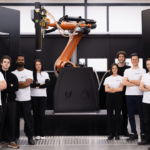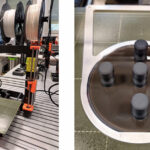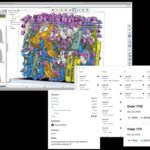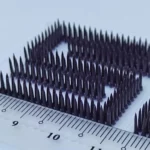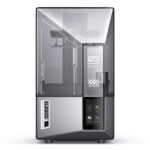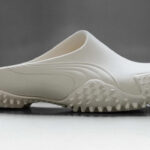The China–United States trade war continues to result in higher consumer prices, stock market instability, and huge struggles for manufacturers. Tariffs—taxes on imports and exports—impact how and where companies produce goods.
With increased supply chain costs because of tariffs, companies need to look towards new ways to save money when producing goods. 3D printing is one possible way for manufacturers to combat the costs of trade wars and other global trade disruptions.
Localized Production Without Shipping Parts
Chinese manufacturers who export goods to the U.S. market need to rethink their production strategies in response to heavy import tariffs levied by the Trump administration.
A simple yet incredibly powerful trait of 3D printing is its use of digital files to print component parts or end-use products. Chinese manufacturers can get around costly tariffs by shipping digital files to 3D print their products in the U.S. These digital files are not subject to the impacts of the ongoing trade war.
3D printing has remarkably few overhead costs compared to traditional manufacturing methods.
Many of the concerns about additive manufacturing at scale are now outdated. As 3D printing technologies have progressed, printed components are better quality, 3D printers are much faster, and the range of printable materials continues to grow.
By making the switch to 3D printing, Chinese manufacturers are moving toward a cloud-based inventory of digital assets. These digital files are immune from tariffs and other trade disruptions.
A recent example of using localized 3D printed production to bypass Trump’s tariffs is Pix Moving, a Chinese startup that builds software and hardware for self-driving cars. The company converts its blueprints to digital files ready for 3D printing. Pix Moving uploads its digital files to the cloud, where a team based in the U.S. downloads those files and 3D prints the necessary components inside the U.S.

How are U.S. Manufacturers Using 3D Printing?
The problem U.S. manufacturers face is that importing parts from China is now more expensive because of tariffs. Firstly, China provides access to low-cost labor, which traditionally drove down production costs. The average Chinese manufacturing worker earned $10,176[1] in 2018 compared to $34,490[2] in the U.S.
Other important factors attract U.S. manufacturers to China and act as barriers to moving traditional production to the U.S. One of those barriers is that Chinese workers are also particularly suited to the type of work needed to manufacture modern goods. China provides an abundance of employees with skills in robotics, computer science, and craftsmanship that is unrivalled in other countries.
Furthermore, China is attractive for production because its economy relies mostly on manufacturing—46.8 percent of China’s GDP is from manufacturing[3]. Access to large-scale production facilities for manufacturing is easy to come by in China.
In the current economic climate, however, production costs in China are much higher despite al the benefits of producing there, so a new approach is needed.
A possible solution for U.S. manufacturers is to domestically produce component parts and products with the help of 3D printing. This is, of course, partly what Trump wants from initiating a trade war. A shift towards domestic manufacturing along with a reduction in the trade deficit are his cited reasons for imposing tariffs.
With fewer cost, speed, and quality issues in additive manufacturing than before, the trade war will accelerate the 3D printing market in the United States. A simple assembly line switch from China to the U.S. isn’t likely to drive savings.
Additive manufacturing removes much of the labor needs of traditional manufacturing. There is no need for multiple skilled technicians to oversee processes that use multiple machines.
Designing for AM leads to products with fewer parts and thus less assembly time. Advanced and automated post-processing solutions for additive manufacturing further reduce the labor burden of this production method. In addition, there is less need for huge facilities on the scale that traditional assembly lines demand. The result is that industrial 3D printing is a viable choice for U.S. manufacturers who want to switch to producing in the U.S.
Mitigating the Impact of Global Trade Disruptions
The ongoing China-US trade war is just one example of how trade disruptions can impact manufacturing strategies. A currently evolving situation has seen the Trump administration levy tariffs on imports of European aircraft, agriculture, and other produce. The tariffs are in retaliation to illegal subsidies given by the European Union to aircraft manufacturer Airbus.
In what is a particularly uncertain geopolitical climate, no country is safe from trade disruptions. New ways of thinking about manufacturing are needed.
3D printing provides manufacturers in many industries with a way to mitigate the impact of global trade disruptions. Companies that want to export goods can use 3D printing methods and digital blueprints for localized production to get around tariffs. Companies that outsource production to take advantage of cheap labor in other countries can turn to additive manufacturing as a more cost-efficient domestic production method.
Whatever your industry, there is a good chance 3D printing fits into your production chain. The difficulty is figuring out exactly where and how 3D printing fits, and that is where we come in.
You can contact us now for a company scan or product scan. We can find out exactly how and where your company is likely to benefit from implementing additive manufacturing.


